You have no items in your shopping cart.
Labrang Monastery
Introducing Labrang Monastery (from Wikipedia & Chinaculture)
Known as the "Tibetan School of the World", Labrang Monastery is one of the "Great Six" Gelug school of Tibetan Buddhism. It is located in Xiahe County, Gannan Tibetan Autonomous Prefecture, Gansu, in the traditional Tibetan area of Amdo. Built in 1709, Labrang Monastery is home to the largest number of monks outside the Tibet Autonomous Region. In the early part of the 20th century, Labrang was by far the largest and most influential monastery in Amdo. As the monastery used to host 108 temples at its peak, Labrang is considered the cultural and political heart of Gannan region and offers the best teaching system of Tibetan Buddhism in China. In 1982, it was listed as a key cultural relics unit under national protection. In 2018, Labrang was listed among the "100 Wonders in Northwest China" at the Northwest China Tourism Marketing Conference & Tourism Equipment Exhibition.
Labrang Monastery Fast Facts
• Chinese Name: La Bu Leng Si 拉卜楞寺
• Best Time to Visit: All year around
• Recommended Visiting Hours: 2-3 hours
• Things to Do: Photography, Architecture, Buddhism
• Opening Hours: All day; 08:00-18:00 for Grand Sutra Hall & Gongtang Pagoda; 08:00-16:00 for other halls
• Entrance Fee: Free for the main hall; CNY 40 for several main halls; CNY 20 for Gongtang Pagoda
• Address: Renmin West Street, Xiahe County, Gannan Tibetan Autonomous Prefecture, Gansu Province
What to Expect at Labrang Monastery
Labrang has a rugged, antique and classic architectural style. All the main temples have copper gilded decorations such as falun, yin and yang beast, vase, and lion on the top, while some roofs are covered with copper plating tiles and green glazed tiles. Overall the buildings have a breathtaking grand appearance. The complex is really impressive, big enough to be considered a small town (82.3 hectares), and is mainly characterized by the traditional Tibetan style with a little Chinese taste in some details and decorations. Inside the monastery there are six learning institutes (two of esoteric Buddhism, medicine, theology, astrology, and law), a Sutra debate hall, eighteen halls, and thousands of dwellings for monks. You can admire an incredible collection of Buddhist statues, sutras (the collection of sacred teachings of the Buddhism), religious artifacts, yak butter statues, thangka (special kind of Buddhist paintings), and precious relics, all illuminated by the dim light of yak butter candles, giving the interior spaces a flickering light and sometimes a pungent smell.
Stupa
The Stupa (also called chorten in the Tibetan language) are bell-shaped religious buildings tipped by a pinnacle. Usually they contain sacred texts, or relics and holy artifacts belonging to important monks or religious personalities. They originated from India where it was custom to bury saints or their relics in similar mausoleums.
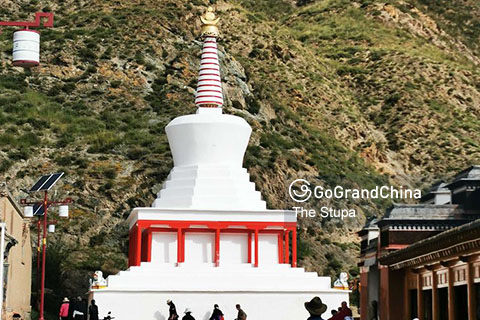
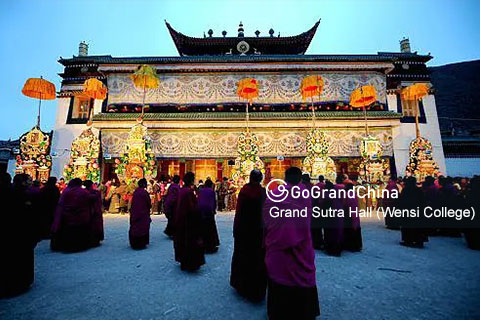
Grand Sutra Hall (Wensi College)
Located in the center of the monastery, this building is one of the most imposing and representative of the culture. Inside there is the Grand Sutra Hall, the most important prayer hall, where the monks gather every day to recite their rituals together.
Golden Tile Temple (Serkung)
The highest building of the whole monastery is easily recognized by the pitched roof covered in gold. Some of the decorative features were made by Nepalese artisans, influencing the architectural taste and look of the building.
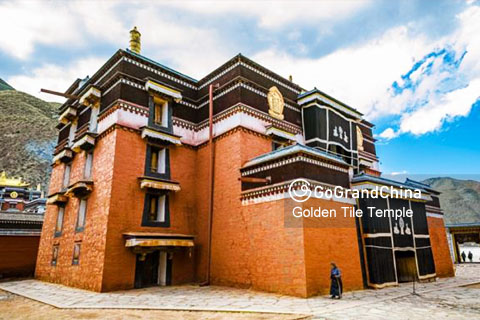
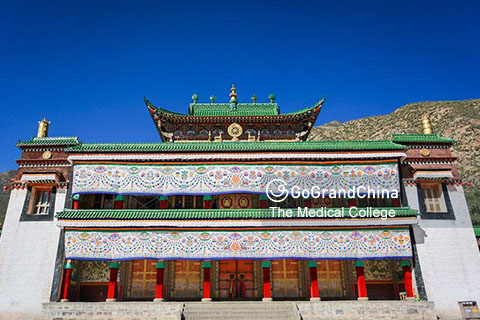
The Medical College
The Medical College is home to one of the most important clinics and pharmacies of the Gannan, where specialists of tibetan medicine (one of the oldest practices in the world) study and prepare traditional Tibetan medications using natural ingredients.
The Kora (Corridor of Prayer Wheels)
The Kora is a prayer wheel circuit that extends along the entire perimeter of the monastery. It is the longest in the world of its kind at about 3.5 km long and features over 1,700 colorful hexagonal scripture wheels. Pilgrims walk around the Kora clockwise from the early morning, rotating the wheels, and praying for absolution from their problems.
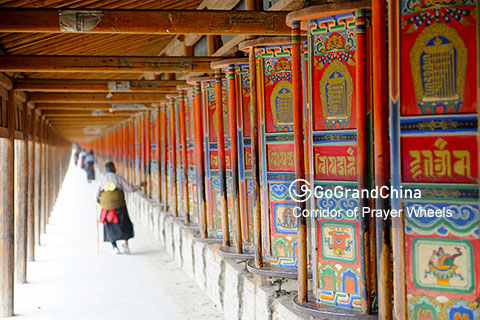
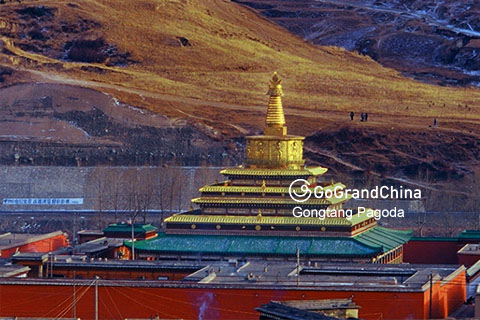
Gongtang Pagoda
Located in the southern part of the monastery, close to the river, this grandiose religious building is capped by a golden pagoda. You can climb up the roof to the base of the golden stupa and enjoy an incredible view of the monastery and the mountains in the background.
How to Get to Labrang Monastery
• Labrang Monastery is approximately 240 km away from Lanzhou.
• Take a long-distance bus from Lanzhou South Bus Station or Lanzhou Passenger Transport Center to Xiahe County (3.5 hours). Upon arrival, take a taxi to the monastery.
• Rent a car/bus from GGC to enjoy a hassle free private transfer from hotels in Lanzhou to Labrang Monastery.
Additional Travel Advice on Labrang Monastery
• Labrang Monastery is a religious site, so visitors should dress modestly, behave with good manner. Do not talk too loud. Do not smoke inside the temple.
• In the principle of Tibetan culture, walking around temples, palaces and turning praying wheels should follow the clockwise direction.
• Do not touch or point at the Buddhist statues.
• Photographing is forbidden in the main halls of the monastery
There are no products matching the selection.

